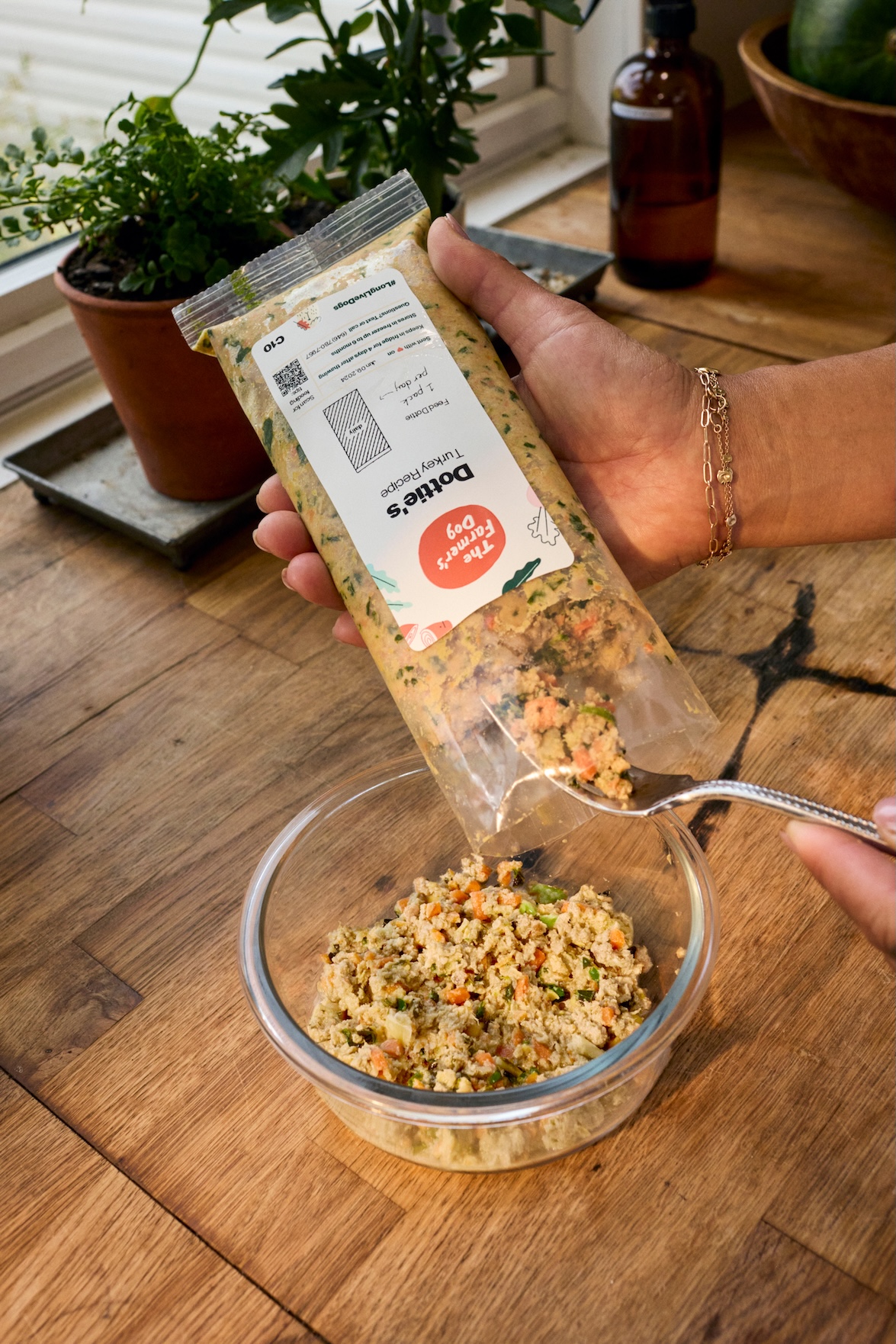Anytime you can give your dog a treat—or just a little something extra—that’s both exciting and good for them, it’s a win. As it happens, some of the treats that fit that bill best are things you have at home, and that you may have even ended up throwing away.
This is especially true now, when many people are at home, cooking more than usual, and trying to make the most of every shopping trip.
Here, some tips for healthy, homemade treats and meal toppers that’ll add some extra nutrients to your dog’s diet, and possibly some extra excitement to their day.
Bone broth
Bone broth is perhaps the greatest example of turning scraps into dietary (and in some cases, actual) gold. While humans have been making bone broth for centuries, it’s experienced a renaissance in recent years as a health drink, spawning countless businesses. Bone broth is made by simply simmering bones and connective tissue from animals or fish for a long, long time—24 hours or more. The long cooking process creates a nutrient-dense elixir that’s said to have many health benefits for people, and dogs.
Simmering bones draws out minerals including calcium, magnesium, and phosphorus. The collagen in cartilage and bone also yields gelatin, a protein that helps support gut health and joint health. Bone broth contains other compounds that can help dogs’ joints, including glucosamine and chondroitin. Prepared carefully, it’s a safe and healthy addition to your dog’s diet.
How to make bone broth:
Place beef, chicken, turkey, or pork bones in a large pot or crockpot (because of the long cooking time, you may prefer the latter). You can use raw bones, or bones left over from your meals, like roast chicken or turkey, or bone-in meats. If possible, include bones with joints (like chicken feet, wings, and thighs, or beef knuckles)—the cartilage will yield maximum gelatin. Skip the seasonings and don’t add any extras like garlic or onions.
Fill up the pot with water, making sure to cover the bones and then some.
Add 3 tablespoons of apple cider vinegar (which is said to help draw the nutrients out of the bones).
Simmer for 24 hours or more. Optional: In the last 30 minutes of cooking, add some vegetables for extra nutrients.
Skim the remaining bones out of the broth (NEVER feed cooked bones to your dog). When cooled, remove the crust of fat that’s formed on the top.
You can keep the broth in the fridge for several days.
Pro tip: put broth in ice cube trays and freeze, so you can keep it on hand longer and dispense small amounts as a treat.
Bone broth can be fed “straight” or added to your dog’s food.
If bone broth is a new addition to your dog’s diet, introduce it slowly. Start with a small serving. A good guideline to use is to serve one ounce of bone broth for every 10 pounds of your dog’s body weight.
Peelings from carrots and other vegetables
Low in calories, and packed with fiber and nutrients like vitamins A and K, and potassium, carrots are a great all-round snack for dogs. Another plus—you don’t need to let any part of the carrot go to waste. Everything from root to leafy green tops are safe for dogs to eat.
If you’re peeling some carrots for your own dinner, save those shavings and add them to your dog’s bowl for some added texture, and vitamins (choose organic carrots, if possible, and be sure to wash the carrots first). You can also cook and puree the peels for a delicious, lickable treat.
You can also use peelings from sweet potatoes. And if you’ve got herbs like curly-leaf parsley, basil, and mint that you used for a recipe and that are now in danger of wasting away, chop up a small amount and add to your dog’s dinner (a pinch for dogs under ten pounds; a teaspoon per 20 pounds of weight for larger dogs). You can use all parts, including the stems.
Those outer leaves of lettuces that you don’t like
Who among us hasn’t cast off perfectly good lettuce leaves while making a salad because they’re a little rough around the edges? Those leaves are perfectly good, and perfect to put aside for your dog. Consider these options:
Romaine: Romaine lettuce, while not a super concentrated source of nutrients, does have calcium, vitamins C and A, B-vitamins and minerals. And, it’s a good source of fiber and moisture which can help with elimination and immunity.
While making your own salad, save the (clean) outer leaves and break them into small pieces. Some dogs will enjoy lettuce on its own as a treat; for others, add to their food bowl.
Kale: If you’ve got some kale leaves that didn’t make the cut in your salad masterpiece, you can tear them up and add to your dog’s bowl. Better still, follow the advice of integrative veterinarian Jeff Feinman, VDM, CVH, and make a kale smoothie. Massage the kale, add fresh or frozen blueberries, and some liquid (a splash of vegetable or chicken stock) to make it blendable. Add the resulting drink to your dog’s meals. Start with no more than 1/4 cup per meal for dogs 25 pounds or less, and 1/2 cup for pets over 25 pounds.
As always, make sure “extras” make up no more than 10% of your dog’s daily caloric intake, or you can risk weight gain, and nutritional imbalances. Even if you’re feeding “cast-offs,” ensure the food is still fresh and edible, and not past its prime. Make sure anything you’re giving your dog beyond their regular food is free of butter, salt and other added flavors (be sure to review the list of foods to avoid giving your dog), and always start slow if you’re introducing a new food.




